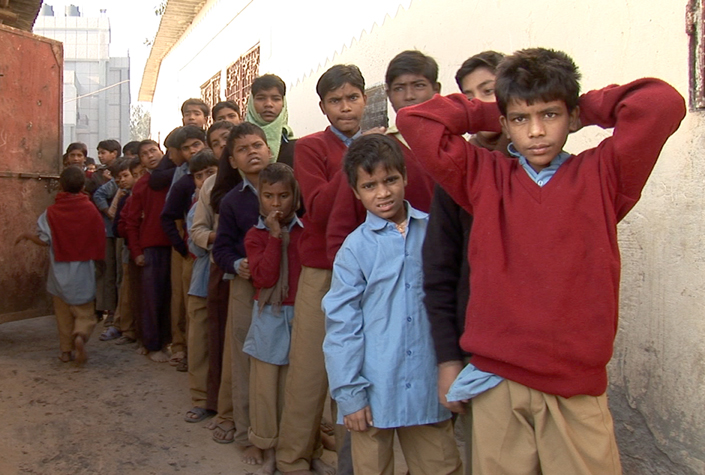GANDHI’S CHILDREN
India 2008 | 185 Min. | DigiBeta, OmeU
The Prayas Children’s Home for Boys: a monolithic building, outwardly not unlike a prison, located in one of New Delhi’s poorer neighborhoods. The institution provides shelter to 350 boys. Some are runaways, some were sent by their parents to find work in the city, others are orphans living on and from the streets of New Delhi. Half of the boys are subject to police supervision, having run into trouble with the law.
Over the course of many months, David MacDougall chronicles the lives of these youths with his camera, letting them portray their day-to-day existence and inviting us into their world. What emerges is a moving collection of portraits – portraits of boys who, despite their young age, have already experienced a great deal. Then one day 181 more boys arrive at the home, all of them from a factory that was shut down for employing illegal child labor.
MacDougall’s film avoids passing judgment. Its various protagonists combine to paint a picture of a particular everyday reality. MacDougall gives the boys time and space, allowing the reasons for their situation and the role of the state institution to gradually come to the fore, in addition to the institution’s limitations. His camera remains in the confines of the home, exploring its broad corridors, sleeping quarters, washrooms, and workrooms.
David MacDougall: “The documentary films we get to see on TV nowadays mainly consist of interviews and a handful of other shots. It’s very easy to make films without actually examining how people live. But just asking them how they live simply isn’t enough. I think this type of narrow perspective has become a sort of formula in documentary filmmaking. In order to overcome it, I began to seek out other aspects of social experience. I try to avoid expressing everything using words. I’m interested in how people interact with their environment, both verbally and nonverbally. Viewing the communities in which we live as environments gives rise to what may be called “social aesthetics”. This contains many diverse aspects: How people move about, how they build buildings, what sort of clothes they wear, and the rituals they practice. I view communities as constructed composite works, which bear collective ‘authorship’ and have followed a particular design historically.“ – Excerpt from an interview with David MacDougall led by Volker Kull (Der Kameramann 08/01).



